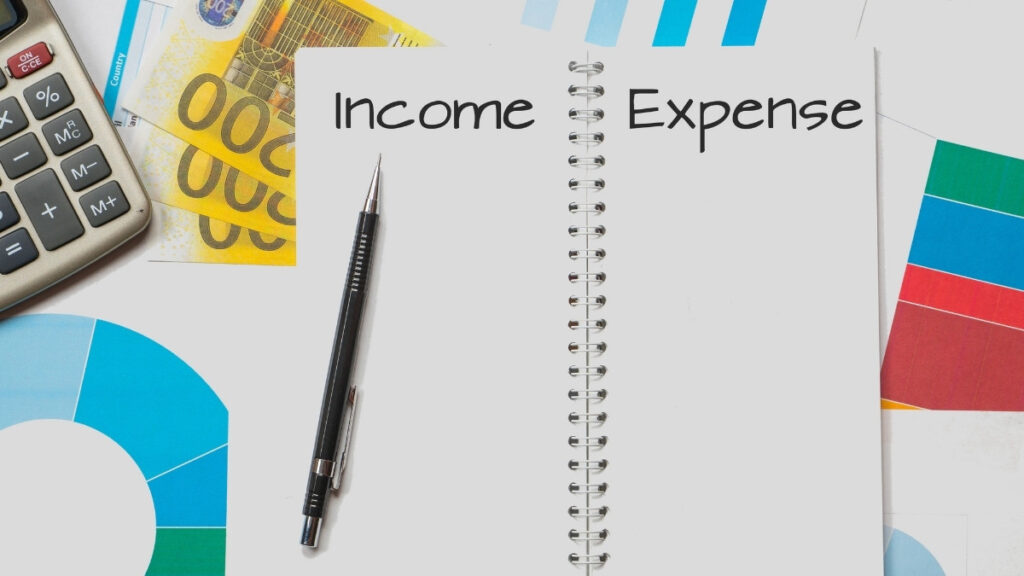
Financial gurus have been telling you to skip your daily coffee for decades. But if this advice actually worked, everyone who quit Starbucks would be millionaires by now. You’ve been cutting small expenses, meal prepping, and saying no to small joys—yet your bank account barely moves.
Meanwhile, others build wealth without obsessing over every $5 purchase. This guide reveals why the “latte factor” is mathematically insignificant, three true levers of wealth building strategies that work, a framework to focus your energy where it matters, and how to avoid personal finance mistakes while enjoying life and building real financial security.
The Latte Factor Myth: Let’s Do the Actual Math
The “latte factor” comes from David Bach’s 2004 book “The Automatic Millionaire.” The idea is simple: small daily expenses add up to huge amounts over time. Cut them out, invest the savings, and you’ll retire rich. It sounds great. But let’s actually do the math and see if it holds up in 2025.

Here’s the standard calculation. A $5 latte five days a week costs you $1,300 per year. If you invested that money at 7% annual returns for 30 years, you’d have about $122,000. That sounds impressive until you think about what you gave up. That’s 30 years of daily coffee. That’s 7,800 morning routines where you made instant coffee at home while your coworkers grabbed Starbucks. And at the end, you have $122,000, which might buy you three years of retirement expenses if you’re lucky.
Why This Advice Keeps Spreading
This advice persists because it feels actionable. Anyone can skip coffee. You don’t need a degree or special skills. You just need willpower. It makes you feel in control when everything else about money feels overwhelming. Plus, it’s easy for financial experts to explain in a 30-second TV segment.
But here’s the trap. Focusing on your $5 latte puts your attention on deprivation instead of growth. You spend mental energy tracking small purchases. You feel guilty every time you “mess up.” Behavioral economists call this decision fatigue. Every small financial choice drains your willpower. Pretty soon, you’re so tired of restricting yourself that you give up entirely.
What the Research Actually Shows
Studies on financial behavior tell a different story than the latte factor. Research from behavioral economists shows that willpower is a limited resource. When you use it all up on small decisions, you have nothing left for big ones. You track every coffee purchase but don’t negotiate your salary. You clip coupons but don’t shop around for car insurance. Meanwhile, your housing costs eat 40% of your income, and nobody’s talking about that.
The real numbers matter here. Let’s say you save $1,300 per year by cutting coffee. Now compare that to reducing your rent by just $300 per month. That’s $3,600 per year saved. Or $150 per month less on a car payment? That’s $1,800 per year. One big decision beats a year of tiny sacrifices.
Tips:
- Calculate your actual “small purchase” spending for one month to see real numbers
- Compare that total to just one of your major monthly expenses (rent, car, insurance)
- Focus your energy on decisions that move the needle by hundreds, not dollars
- Give yourself permission to enjoy small daily pleasures without guilt
The Big Three: Where Wealth Actually Gets Built
Income is the master lever of wealth building. You can’t save your way to wealth on a limited income. This is the part most financial advice skips. They tell you to cut expenses and save the difference. But if you’re making $45,000 and spending $43,000, cutting $2,000 in expenses still leaves you broke. You need more money coming in.

The 50/30/20 rule gives you a framework: 50% for needs, 30% for wants, 20% for savings and investments. But here’s what matters more than the exact percentages. If your needs cost 80% of your income, you’re stuck. You can cut wants to zero and still can’t save enough. But if you increase your income by 30%, suddenly those same expenses become 61% of your new income. Now you have breathing room.
Expense Reduction vs. Income Expansion
Let’s look at the math of both approaches. Expense reduction has a ceiling. You can only cut so much before you hit basic survival costs. You need housing. You need food. You need transportation to work. Once you’ve cut the waste, you’re done. There’s no more room to save.

Income expansion has no ceiling. You can always make more. And here’s the key: increasing income compounds faster than cutting expenses. Every dollar you earn can be saved, invested, or spent. Every dollar you cut is just gone. Make an extra $500 per month, and you might save $400 of it. Cut $200 in expenses, and you save exactly $200.
The Real Wealth Equation
Real wealth follows this formula: (Income – Fixed Expenses) × Investment Rate × Time. Each part matters, but income is the multiplier. Double your income without changing your expenses, and you’ve just doubled your wealth-building potential. Cut your expenses by 20% without changing income, and you’ve improved by 20%. The math clearly favors income growth.

Research on millionaires backs this up. Studies tracking wealth accumulation show that high earners who invest consistently build wealth faster than extreme savers on average incomes. A doctor earning $300,000 who spends $200,000 and invests $100,000 will build more wealth than a teacher earning $50,000 who spends $30,000 and invests $20,000. Even though the teacher has a better savings rate percentage-wise, the doctor’s higher income wins.
Real Example: Two Different Approaches
Person A cuts $200 per month in expenses. They cancel subscriptions, eat out less, and skip weekend trips. After five years of investing that $200 monthly at 7% returns, they have about $14,400. Person B focuses on increasing income by $500 per month through a side hustle. They invest that extra $500 monthly. After five years at 7% returns, they have about $36,000. Same time period. Same investment strategy. The income-focused approach wins by $21,600.
Tips:
- Track your fixed expenses as a percentage of income, not just dollar amounts
- Set income goals alongside savings goals (increase income by 20% this year)
- Invest in skills that raise your earning power before cutting small daily expenses
- Remember: You can always earn more, but you can only cut expenses so far
- Focus 80% of your financial energy on income growth, 20% on expense optimization
The Housing Trap: Your Biggest Wealth Killer
Your housing cost is probably destroying your wealth, and nobody wants to talk about it. The old rule says you shouldn’t spend more than 28% of your gross income on housing. That’s the 28/36 rule financial advisors recommend. In reality, most Americans spend 35% to 40% or more. That difference between 28% and 40% is your wealth-building money disappearing into rent or mortgage payments every single month.

Being “house poor” means you own or rent a place that eats so much of your income that you can’t build wealth. You might live in a nice apartment or house. You might even own property. But if you can’t invest, can’t save, and can’t handle a $1,000 emergency without a credit card, you’re house poor. The house is a liability disguised as an asset.
Geographic Arbitrage: The Remote Work Advantage
Remote work in 2025 opened up something powerful: geographic arbitrage. This means earning a high-city salary while living in a low-cost area. A software developer making $120,000 in San Francisco pays about $3,500 for a one-bedroom apartment. That same developer can move to Raleigh and pay $1,400 for the same space. That’s $2,100 per month saved, or $25,200 per year. Over ten years invested at 7%, that’s $366,000 difference.

The numbers get even better when you compare buying homes. A starter home in San Francisco costs $1.2 million. In Raleigh, it costs $350,000. Same income, same job, but one choice leaves you with an extra $850,000 to invest. This isn’t about moving to a bad area. It’s about choosing places with good quality of life at lower costs.
Practical Options at Different Life Stages
If you’re single or childless, consider roommates. Splitting a two-bedroom apartment instead of renting a one-bedroom can save $600 to $1,000 per month in major cities. That’s $7,200 to $12,000 per year. If you’re established but feeling squeezed, downsizing might make sense. Trading a three-bedroom house for a two-bedroom condo could save $500 per month in mortgage, property taxes, and maintenance.

Refinancing works if you bought when rates were high. In 2025, if your mortgage rate is above 6% and current rates dropped, refinancing could save $200 to $400 monthly on a typical home. That’s real money you can redirect to investments. House hacking (renting out part of your home) is another option. Rent out a bedroom or basement unit, and let that income cover part of your mortgage.
The Ten-Year Wealth Difference
Let’s compare two identical people earning $75,000 per year. Person A spends 35% on housing ($2,188/month). Person B spends 25% on housing ($1,563/month). That’s $625 per month difference. If Person B invests that $625 monthly at 7% returns, they’ll have $106,000 after ten years. Person A has… zero extra. Same income. One choice. $106,000 difference.
Tips:
- Calculate your housing cost as a percentage of gross income right now
- If you’re above 30%, that’s your biggest wealth opportunity
- Research rent prices in remote-work-friendly cities with good quality of life
- Consider a roommate for just 1-2 years to build savings cushion
- Run the numbers on refinancing if you bought when rates were high
- Remember: Every $100/month saved on housing is $1,200/year to invest
Transportation: The $500/Month Money Leak
Your car is probably your second-biggest wealth killer after housing. Most people think a car payment is just the monthly payment. Wrong. The true cost of car ownership includes the payment, insurance, gas, maintenance, registration, and depreciation. For the average American with a $600 car payment, the real monthly cost is closer to $900 to $1,000.

The average new car purchase in 2025 is about $48,000. Most people finance it for 72 months at around 7% interest. That’s $680 per month just for the payment. Add $150 for insurance, $120 for gas, $50 for maintenance, and $25 for registration. You’re at $1,025 per month. That’s $12,300 per year. And here’s the worst part: that car loses 20% of its value the moment you drive it off the lot.
The Tesla Trap and Lifestyle Inflation
Luxury vehicles represent lifestyle inflation at its worst. A Tesla Model 3 costs about $45,000. A Toyota Camry costs $28,000. Both get you to work. The Tesla costs $640/month to finance. The Camry costs $400/month. Add higher insurance for the Tesla ($200 vs. $120), and you’re paying an extra $320 per month, or $3,840 per year, for the privilege of a nicer car. Over ten years invested at 7%, that’s $54,000 of lost wealth.

The same logic applies to any luxury car purchase. A $60,000 BMW vs. a $30,000 Honda Accord. The BMW might feel better. It might impress people. But it costs you real wealth. Every extra dollar in a car payment is a dollar that can’t grow in investments.
Alternative Models for 2025
One-car households save massive amounts. If you and your partner both have cars, do you actually need both? Dropping one car saves the payment, insurance, and maintenance. That could be $600 to $800 per month total. For couples in walkable cities, this works perfectly.
E-bikes changed the game for short commutes. A good e-bike costs $1,500 to $2,000. You pay once, and it lasts years. No insurance. No gas. Minimal maintenance. If you live within 10 miles of work, an e-bike can replace a second car entirely. Car sharing services like Zipcar handle the occasional times you actually need a car.
The Five-Year Wealth Building Difference
Person A buys a new car for $600/month payment plus $250 in other costs. They pay $850/month, or $10,200/year, for five years. Total spent: $51,000. Person B buys a used car for cash ($8,000), pays $150 insurance, $80 gas, and $70 maintenance monthly. That’s $300/month or $3,600/year. Total spent over five years: $26,000 (including the $8,000 purchase). Person B saves $25,000 over five years. Invested at 7%, that grows to about $29,000.
Tips:
- Calculate your TRUE car cost: payment + insurance + gas + maintenance + registration
- Consider buying a 3-5 year old car with cash instead of financing new
- Drop to a one-car household if possible; use rideshare for occasional needs
- Look at e-bikes for commutes under 10 miles
- Never finance a depreciating asset for more than 3-4 years
- Remember: Every $100/month less on transportation is $1,200/year to invest
The Income Expansion Playbook: Make More, Not Less
Salary negotiation is the fastest wealth builder most people ignore. Research shows that 70% of employers expect negotiation, but only 37% of employees actually negotiate. When people do negotiate, they get an average increase of 10% to 20%. If you make $60,000 and negotiate a $6,000 raise, that’s $6,000 more every single year. Over ten years, that’s $60,000 more earned, not counting future raises that compound on the higher base.

The job hopping strategy works better than ever in 2025. Data shows that people who switch jobs every 2-3 years earn 20% to 30% more over their careers than people who stay put. Loyalty doesn’t pay anymore. A 3% annual raise at your current job means you make $61,800 after one year on a $60,000 salary. Switch jobs and get a 20% bump? You’re now at $72,000. That’s $10,200 more per year.
Skill Stacking: The Modern Career Hack
Skill stacking means combining two or three skills that multiply your value. You’re not the best writer. You’re not the best at SEO. But you’re good at both? Now you’re rare. Companies pay premium rates for people who can do multiple things well.

High-value skill combinations for 2025 include: writing plus SEO, design plus no-code tools, finance plus AI tools, marketing plus data analysis, and sales plus technical knowledge. Pick two skills you’re decent at and get good at both. You’ll earn more than someone who’s excellent at just one.
Side Hustles That Actually Scale
Most side hustles are trading time for money. You deliver food, you get paid. You stop delivering, the money stops. That’s fine for quick cash, but it doesn’t scale. Better side hustles leverage skills and eventually become passive or semi-passive income.

Freelance writing pays $50 to $150 per hour once you’re established. Two hours per week at $50/hour equals $5,200 per year. Web design pays $75 to $200 per hour. Online tutoring pays $30 to $80 per hour. Consulting in your professional field pays $100 to $300 per hour. These rates beat delivering food or driving for rideshare apps, and they build skills that increase your main career value.
The $100/Week Target: Making It Real
Making an extra $100 per week, or $5,200 per year, is achievable for most people. At $50/hour, that’s two hours of work per week. At $25/hour, it’s four hours. The key is finding something that pays more than minimum wage and fits your life.

Real examples: Freelance writing (2 hours/week at $50/hour). Weekend pet sitting (one dog per weekend at $100). Online tutoring (3 sessions per week at $35/hour). Selling digital products on Etsy (passive after setup, but takes time to build). Each of these paths can start small and grow.
Progressive Income Strategy
Year one: Start your side hustle. Goal: $5,000 extra per year ($417/month). This proves the concept and builds skills. Year two: Optimize and grow. Goal: $12,000 extra per year ($1,000/month). You’ve figured out what works and double down. Year three: Scale or transition. Goal: $25,000 extra per year ($2,083/month). This might become your main income source or stay as a strong side income.
Tips:
- Negotiate every job offer; 70% of employers expect it
- Consider switching jobs every 2-3 years for 20-30% raises
- Pick two complementary skills and get good at both (skill stacking)
- Start with freelance platforms (Upwork, Fiverr) to test skills
- Track your hourly rate for side hustles; cut anything below $25/hour
- Set a realistic goal: $100/week extra is $5,200/year to invest
- Remember: A $5,000/year side hustle beats cutting $400/month in expenses
Investing: Where Savings Actually Become Wealth
About 58% of Americans own some stock, but that means 42% don’t invest at all. They save money in checking accounts earning 0.5% interest while inflation runs at 3% to 4%. That’s losing money every year. Investing is how you turn savings into wealth. Without it, you’re just storing money that shrinks in value.

The 401(k) employer match is the closest thing to free money you’ll ever find. Here’s how it works: You contribute $5,000 to your 401(k). Your employer matches 50%, adding $2,500. That’s an instant 50% return on your money. No investment beats a guaranteed 50% return. Yet data shows about 25% of employees don’t contribute enough to get the full match. They’re literally leaving money on the table.
Index Funds and ETFs: The Simple Strategy
Index funds are collections of stocks that mirror the market. The S&P 500 index fund owns pieces of 500 large US companies. When the market goes up, your investment goes up. Historical data shows the S&P 500 returns about 10% annually over long periods (30+ years), though any single year varies wildly.

ETFs (Exchange-Traded Funds) work similarly but trade like stocks. Both index funds and ETFs offer instant diversification. Instead of picking individual stocks (which is basically gambling unless you’re a professional), you own a piece of everything. This protects you when individual companies fail.
Starting Small Is Fine
You don’t need thousands to start investing. Most brokerages now allow fractional shares, meaning you can invest with $100 or even $50. The key is consistency. Let’s look at the math.
$100 per month invested at 7% annual returns (conservative estimate) for 30 years grows to $122,708. $500 per month under the same conditions grows to $613,540. The difference between zero and something is infinite. The difference between $100 and $500 monthly is significant but not life-ending. Start with what you can, then increase it.
Investment Account Hierarchy
This is the order you should fund your investment accounts. First: 401(k) up to the employer match. Get that free money. Second: Max out a Roth IRA ($7,000/year in 2025). This grows tax-free forever. Third: Go back and max out your 401(k) ($23,000/year limit in 2025). Fourth: Invest in a regular brokerage account after you’ve maxed the tax-advantaged accounts.
Roth vs. Traditional depends on your current tax situation. Roth means you pay taxes now and never again. Traditional means you get a tax deduction now but pay taxes when you withdraw in retirement. If you’re young and in a low tax bracket, Roth wins. If you’re in your peak earning years with a high tax rate, Traditional might be better.
Real Platform Recommendations
Vanguard, Fidelity, and Charles Schwab all offer low-cost investing with good tools. Their fees are minimal (often $0 for index funds). They offer target-date funds, which automatically adjust your investments as you age. A target-date 2055 fund is aggressive (more stocks) because you have 30 years until retirement. A target-date 2030 fund is conservative (more bonds) because retirement is close.
Target-date funds are perfect for beginners. You pick one fund based on when you’ll retire, and it handles everything else. No need to rebalance or pick individual stocks. Just keep adding money.
Tips:
- Open a 401(k) and contribute at least enough to get full employer match
- Set up automatic contributions so you never forget to invest
- Start with a target-date fund if you’re new to investing
- Increase your contribution by 1% every time you get a raise
- Use Vanguard, Fidelity, or Schwab for low fees
- Remember: $100/month invested is worth $122,708 in 30 years at 7% returns
- Time in the market beats timing the market; start now, not later
The Psychological Shift: From Scarcity to Abundance Mindset
Restriction-based budgeting fails because willpower is finite. Research on self-control shows that willpower depletes throughout the day. Every time you resist something, you use up some of your limited supply. When you create a budget that says “no” to everything, you exhaust yourself. Eventually, you break and spend impulsively. Then you feel guilty and give up on the budget entirely.

The 80/20 rule applies to personal finance harder than almost anything else. 20% of your financial decisions create 80% of your wealth or poverty. Choosing where to live, what to drive, whether to invest, and how much to earn are massive decisions. Choosing whether to buy coffee, order delivery, or get a new shirt are tiny decisions. Most people spend 80% of their mental energy on the small stuff and rush through the big stuff.
Permission to Enjoy: Guilt-Free Spending
A healthy financial system includes money for enjoyment. This isn’t optional. It’s necessary. If your budget is all restriction and no joy, you’ll quit. Build in “fun money” or “guilt-free spending.” Maybe it’s $100 per month. Maybe it’s $300. The amount doesn’t matter as much as having permission to spend it without tracking or justifying.

Ramit Sethi calls this a “conscious spending plan.” You decide what matters to you, spend freely on that, and cut mercilessly on everything else. Love coffee? Buy it. Don’t care about cars? Drive a beater. Love travel? Budget for it. Don’t care about fancy clothes? Wear basics. The key is intentionality, not deprivation.
Automate the Important Stuff
“Pay yourself first” means your investments come out before you see the money. Set up automatic transfers from your paycheck to your 401(k), from your checking to your investment account, from your checking to savings. When it’s automatic, you don’t have to decide every month. You don’t have to resist temptation. It just happens.
Research shows that people who automate their savings save significantly more than people who manually transfer money. Why? Because manual transfers require decision-making, and decisions are subject to emotions, forgetfulness, and competing priorities. Automation removes the decision entirely.
Focus on Growth Metrics, Not Daily Spending
Track your net worth, not your daily lattes. Net worth is assets minus debts. If your net worth goes up every month, you’re winning. It doesn’t matter if you bought coffee. It doesn’t matter if you went out to dinner. If you’re making progress on the metrics that matter (net worth, income, investment balance), the small stuff is noise.
Check your net worth monthly. Make a simple spreadsheet: Cash + Investments – Debts = Net Worth. Watch that number grow. That’s your scoreboard. When you see your net worth increase by $2,000 one month because you got a bonus and invested it, you won’t care about the $40 you spent on coffee.
Tips:
- Build “fun money” into your budget (start with $100/month)
- Automate all investment and savings transfers on payday
- Track net worth monthly, not daily expenses
- Spend freely on 2-3 things you truly value; cut everything else
- Stop feeling guilty about small purchases if your big numbers are moving
- Remember: It’s okay to enjoy your life while building wealth
The 90-Day Wealth Building Action Plan
Month 1: Audit & Optimize the Big Three
Week 1: Calculate your housing cost as a percentage of income. If it’s over 30%, brainstorm options. Can you move? Get a roommate? Refinance? House hack by renting a room? Write down three possible solutions. Week 2: Calculate your true transportation cost (payment + insurance + gas + maintenance). Compare it to alternatives. Could you go one-car? Take public transit? Use an e-bike? Identify potential savings.

Week 3: List all subscriptions and memberships. Cancel anything you haven’t used in 30 days. This isn’t about being cheap. It’s about cutting waste. That gym membership you don’t use? Gone. The streaming service you forgot about? Cancelled. Week 4: Calculate your “big wins potential.” How much could you save monthly if you optimized all three? That’s your baseline number.
Month 2: Income Expansion Foundation
Week 5: Skills inventory. Write down everything you’re good at. Professional skills, hobbies, knowledge areas. Don’t dismiss anything. Can you write? Design? Code? Teach? Fix things? Speak another language? Make a complete list. Week 6: Income stream brainstorm. Look at your skills list. What could you charge money for? Research rates on Upwork, Fiverr, or ask in relevant Reddit communities. Pick the top three options.

Week 7: First income experiment. Choose one income idea and test it. Create an Upwork profile. List something on Etsy. Offer to consult for one friend’s business. The goal isn’t perfection. It’s proof of concept. Week 8: Evaluate the experiment. Did you make any money? What worked? What didn’t? Either iterate on this idea or try a different one from your top three.
Month 3: Investment Automation
Week 9: Open investment accounts if you don’t have them. Start with your employer’s 401(k). Then open a Roth IRA at Vanguard, Fidelity, or Schwab. This takes about 30 minutes per account. Week 10: Set up automatic transfers. Move money from checking to investments on payday. Start with whatever you can afford, even if it’s just $50 per paycheck.
Week 11: Choose your investments. If you’re new, pick a target-date fund based on when you’ll retire. That’s it. One fund. Done. If you’re more experienced, consider a three-fund portfolio (US stocks, international stocks, bonds). Week 12: Establish review rhythm. Set a monthly calendar reminder to check your net worth. Watch it grow. Adjust your savings rate if you got a raise or found more income.
Common Obstacles and Solutions
Obstacle: “I don’t have any money left to invest.” Solution: Start with the Big Three audit. Find $200/month in savings, invest that. Obstacle: “I don’t have skills to monetize.” Solution: Everyone knows something valuable. You just need to package it. Obstacle: “The stock market is scary.” Solution: Dollar-cost averaging (investing the same amount monthly) reduces risk. Time in the market beats timing.
Tips:
- Use Mint, YNAB, or a simple spreadsheet to track your Big Three expenses
- Set calendar reminders for each week’s action item
- Join online communities (Reddit’s r/personalfinance, r/financialindependence) for support
- Take one action per week; don’t try to do everything at once
- Celebrate small wins (first $100 invested, first $50 from side hustle)
- Remember: 90 days from now, you’ll wish you started today
Conclusion
The latte factor advice comes from good intentions. Financial experts want to help. They want to give you something simple and actionable. And cutting small expenses feels like progress. But here’s what 20 years of that advice has produced: a generation of people who feel guilty about coffee while their rent eats 40% of their income.
The three true wealth levers are income, major expenses, and investing. Increase your income through negotiation, job switching, and skill stacking. Optimize your housing and transportation costs. Invest consistently in index funds. Do those three things, and you’ll build more wealth than a lifetime of skipping lattes ever could.
You have permission to enjoy your coffee guilt-free. Buy the nice dinner. Take the weekend trip. Life is short. The real question isn’t “Did I spend $5 on coffee today?” The real question is “Did my net worth grow this month?” If your income is rising, your major expenses are optimized, and you’re investing consistently, the answer will be yes.
This week, calculate your Big Three: housing, transportation, and subscriptions. Add them up. If they’re over 50% of your take-home pay, that’s your real opportunity. Not your coffee budget. One decision to move to a cheaper city, drop to one car, or negotiate a $10,000 raise will do more for your wealth than a decade of penny-pinching. Focus on the numbers that matter.
Build wealth by thinking bigger, not smaller.






